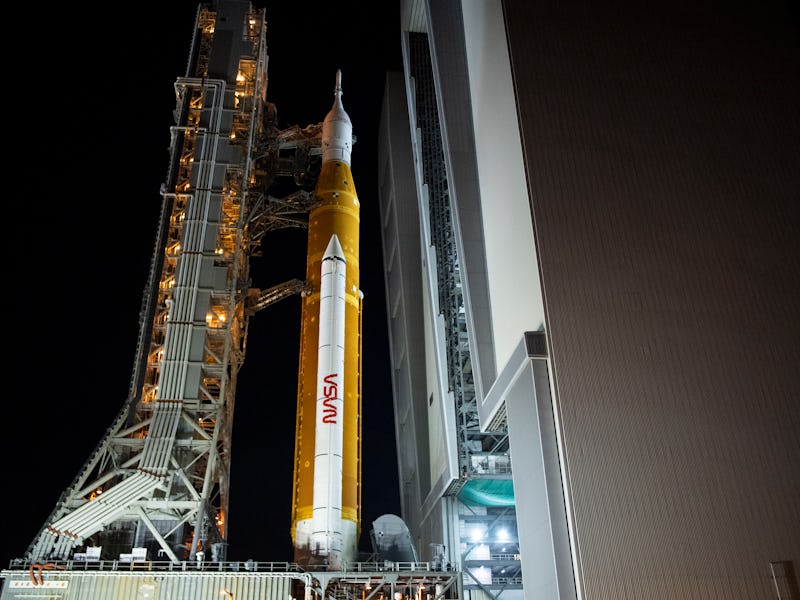NASA decides to proceed with Artemis Moon launch after hurricane
NASA provided their newest update to their new Moon mission on Friday.

NASA is still assessing potential damage to its Artemis I rocket from Hurricane Nicole, but there’s nothing that prevents a launch to the Moon on Wednesday, November 16, says one space agency official. The update comes amidst concern that NASA made a risky decision to leave the rocket at the launchpad bare and exposed.
Artemis I rode through the storm, and now NASA is looking at issues on the back side. The human-grade spacecraft will not carry humans onboard — instead carrying one NASA mannequin and two European Space Agency mannequin torsos, which will measure the effects of the trip on future astronauts. But nevertheless, getting it right is critical. One NASA leader told reporters on Friday that dissenting voices are important, and that leaving Artemis I at the launchpad was the best decision.
Artemis I promises to be the first phase of an ongoing acceleration to return humans to the Moon for the first time since Apollo’s final mission almost half a century ago. And just last week, NASA was staring at the finish line, as it prepared the vehicle for rollout to Launch Complex 39B at Kennedy Space Center (KSC) in Florida for a Monday, November 14 launch.
When presented with preliminary data about the weather system that unfortunately later escalated into Hurricane Nicole, NASA officials elected to go through with releasing Artemis I from its protective garage. It was actually here, inside KSC’s Vehicle Assembly Building (VAB), that NASA safeguarded the Moon rocket from the rough winds blown in by Hurricane Ian back in late September.
But the forecast didn’t alarm them last week the way it had during Ian, and they chose to roll out. Then, faced with a harsher forecast, NASA officials and colleagues in the U.S. Space Force weighed their choices between keeping Artemis I out at the launchpad exposed to the winds or once again bringing it inside the VAB.
The team decided that the high winds were a higher risk if Artemis I embarked on a rollback, a slow process that can take nine hours. As Jim Free, associate administrator for Exploration Systems Development Mission Directorate at NASA, explained during the press conference, the dynamic movement would alter the load bearing of the vehicle if it was in motion.
“I think if we knew on the night before that we were rolling out that it was going to be a hurricane, we probably would have stayed in the VAB,” Free told reporters on Friday.
When asked about the conversations, Free insisted there were no dissenting opinions and that, eventually, everyone agreed to keep Artemis I out there.
“There were some folks who talked about, hey, the best place to be is the VAB,” Free said. “And I’m summarizing here, but [some said] the storm looks like it’s loosely formed, doesn’t look like it’s coming this way, we have time to get out to the pad; we have the [wind] limits for Hurricane Ian … so I don’t know that there was anyone that dissented.
“There were folks really thinking hard about whether we should roll out or not. In the end, everyone agreed that we should roll out. I think we always try and look for, and I’ll start with myself as a leader, try and look for the dissenting opinions,” Free added. “That’s what we learned on the Challenger and Columbia.”
So now the next target date is two days later than planned, giving NASA more time to move through their “normal flow” of pre-flight operations, like powering up the rocket and conducting the program’s specific engineering test.
If Artemis I stays grounded on November 16, NASA will try again on November 19. And if that fails too, the space agency will try once again on a newly announced date, November 25.